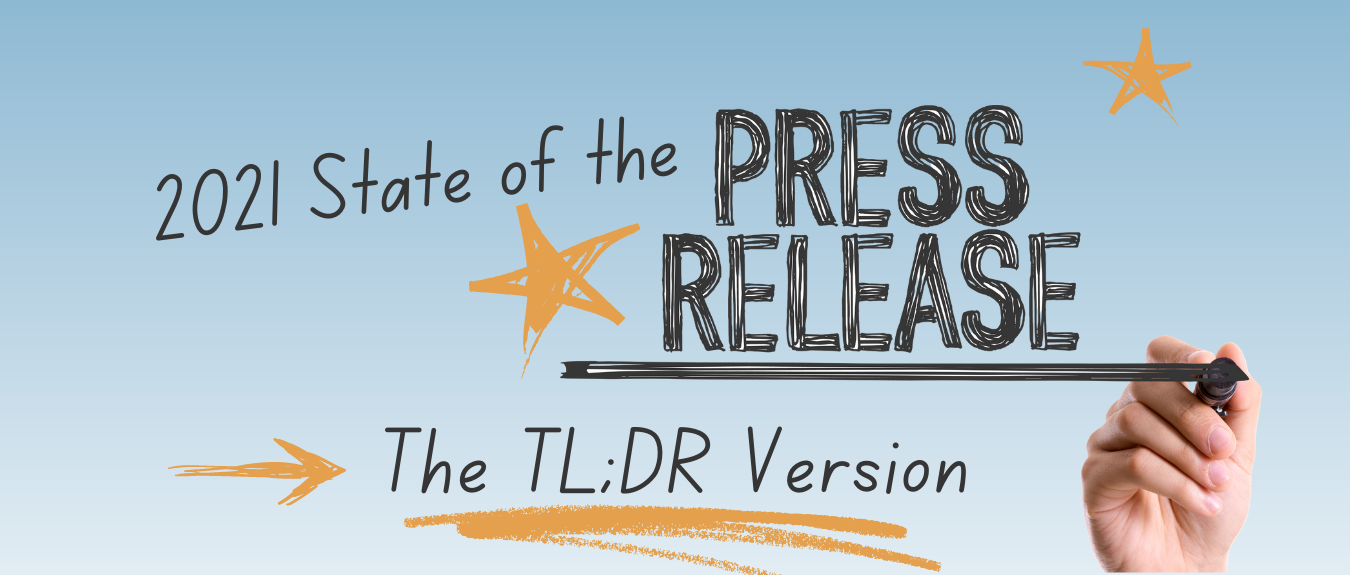There are a few yearly traditions Americans rally behind and await with eager longing and hushed anticipation – birthdays, holidays and the publishing of Cision’s “State of the Press Release” report.
The 2021 version of this annual 20-something-page paean to the press release – brought to you by the people who profit the most from press releases, it bears keeping in mind – recently arrived on our virtual doorstep. As is the hallowed tradition in these parts, we read the report and summarize it below to save you the anguish, remorse and indignity.
The report is the result of Cision’s examination of more than 100,000 press releases from the prior year, coupled with a survey of PR pros about their press release practices. For those of you who find the full report too long and do not want to read it (TL;DR), here are five key take-aways to consider:
- In terms of volume, the industry has returned to a pre-COVID-19 level of “normal”: Seventy-four percent of respondents said that their press outreach was either on par or more frequent than before COVID or not impacted by the pandemic at all.
- Thought leadership releases represent an opportunity for some companies (and a business development opportunity for Cision): As virtually anyone familiar with the concept of a press release knows, the primary reason (83%) companies distribute them is to share business news. Cision notes that just 47% of companies use press releases to share thought leadership content, such as research, data, tips and best practices. Other leading reasons for issuing press releases include: product launches (40%); diversity, equity and inclusion (25%); and corporate social responsibility (19%).
- For headlines, less is more: Certainly, headlines are critical to a release’s messaging, and Cision recommends keeping them fewer than 70 characters. Email applications and Google’s search engine will cut off any text over that amount, according to Cision.
- Mind your action verbs: The verb “announce” is popular in headlines but doesn’t generate a commensurate amount of page views. “Launch” is also widely used but performs proportionately better with its usage. Also consider “show,” “roll out,” “reveal,” and “allow.”
- Check it twice: Not surprisingly when dealing in the written word, Cision found thousands of errors in “final” releases sent by clients. The most common types of errors include: hyperlink errors, misspellings, incorrect dateline dates, grammar mistakes and day/date discrepancies.
What will 2022 hold in store for the state of the press release? The sheer possibilities almost exceed the human capacity for thought (or at least mine) but be sure to return here next year to learn all about it. Until then, our nation turns its lonely eyes to you, Cision.
